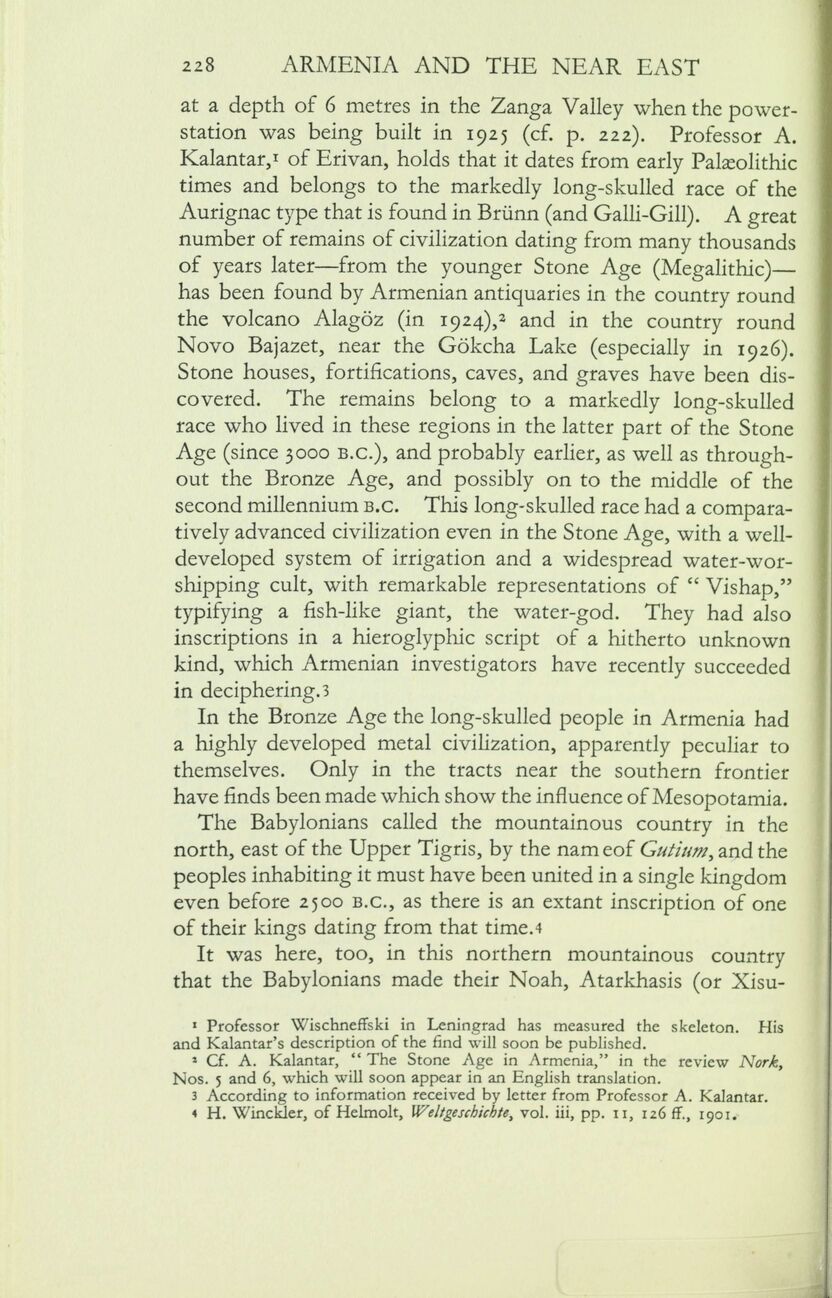
Full resolution (JPEG) - On this page / på denna sida - X. Chapters in the history of Armenia

<< prev. page << föreg. sida << >> nästa sida >> next page >>
Below is the raw OCR text
from the above scanned image.
Do you see an error? Proofread the page now!
Här nedan syns maskintolkade texten från faksimilbilden ovan.
Ser du något fel? Korrekturläs sidan nu!
This page has never been proofread. / Denna sida har aldrig korrekturlästs.
ARMENIA AND THE NEAR EAST
228
at a depth of 6 metres in the Zanga Valley when the power
station was being built in 1925 (cf. p. 222). Professor A.
Kalantar,1 of Erivan, holds that it dates from early Palæolithic
times and belongs to the markedly long-skulled race of the
Aurignac type that is found in Briinn (and Galli-Gill). A great
number of remains of civilization dating from many thousands
of years later—from the younger Stone Age (Megalithic)—
has been found by Armenian antiquaries in the country round
the volcano Alagoz (in 1924),2 and in the country round
Novo Bajazet, near the Gokcha Lake (especially in 1926).
Stone houses, fortifications, caves, and graves have been dis
covered. The remains belong to a markedly long-skulled
race who lived in these regions in the latter part of the Stone
Age (since 3000 b.c), and probably earlier, as well as through
out the Bronze Age, and possibly on to the middle of the
second millennium b.c. This long-skulled race had a compara
tively advanced civilization even in the Stone Age, with a well
developed system of irrigation and a widespread water-wor
shipping cult, with remarkable representations of " Vishap,"
typifying a fish-like giant, the water-god. They had also
inscriptions in a hieroglyphic script of a hitherto unknown
kind, which Armenian investigators have recently succeeded
in deciphering.3
In the Bronze Age the long-skulled people in Armenia had
a highly developed metal civilization, apparently peculiar to
themselves. Only in the tracts near the southern frontier
have finds been made which show the influence ofMesopotamia.
The Babylonians called the mountainous country in the
north, east of the Upper Tigris, by the nameof Gutium, and the
peoples inhabiting it must have been united in a single kingdom
even before 2500 b.c, as there is an extant inscription of one
of their kings dating from that time.4
It was here, too, in this northern mountainous country
that the Babylonians made their Noah, Atarkhasis (or Xisu-
1 Professor Wischneffski in Leningrad has measured the skeleton. His
and Kalantar’s description of the flnd will soon be published.
1 Cf. A. Kalantar, " The Stone Age in Armenia," in the review Nork,
Nos. 5 and 6, which will soon appear in an English translation.
3 According to information received by letter from Professor A. Kalantar.
4 H. Winckler, of Helmolt, Weltgeschichte, vol. iii, pp. n, 126 ff., 1901.
<< prev. page << föreg. sida << >> nästa sida >> next page >>